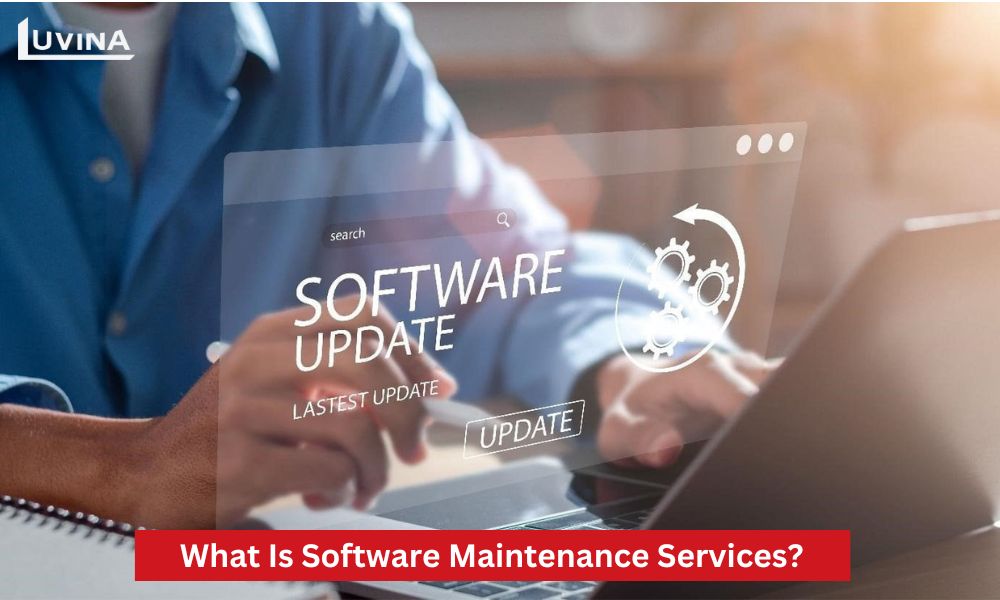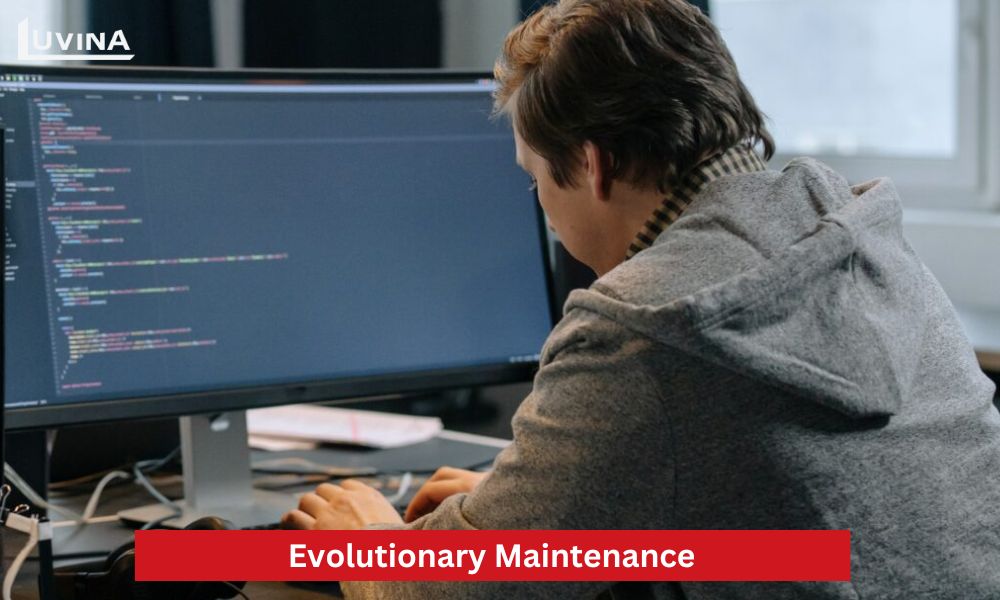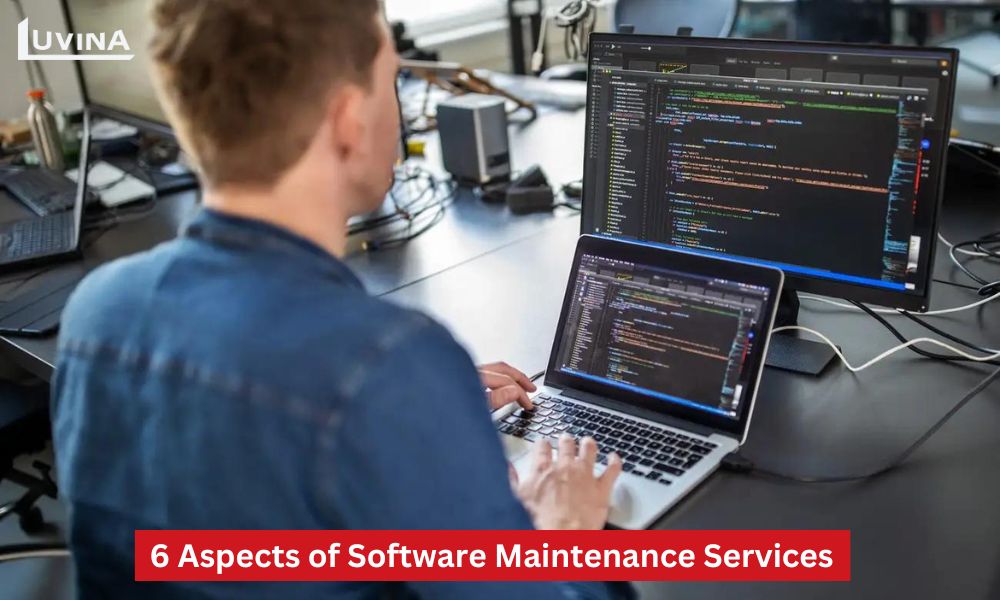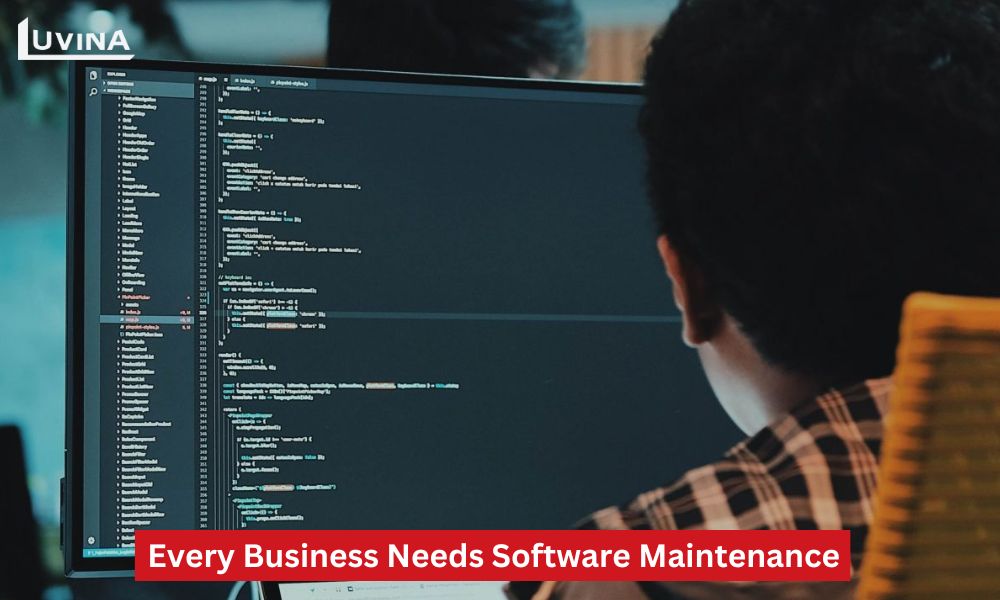Today, software has become the backbone of nearly every aspect of modern business operations. From managing finances to engaging customers, software applications play a pivotal role in driving efficiency, productivity, and innovation. However, like any other asset, software requires regular maintenance to ensure optimal performance and reliability over time. So, what is software maintenance? Why do businesses need software maintenance? Let’s find the answers in the following article.
What is Software Maintenance?
Software maintenance is a crucial phase in the software development life cycle. Software maintenance services encompass management activities, updates, enhancements, bug fixes, and more for applications, ensuring their effective, smooth operation that aligns with the business’s developmental needs and keeps up with general trends.

The software maintenance phase occurs after the development and deployment stages. Beyond just fixing errors, the primary goal of service maintenance software is to ensure the software remains secure and scalable. While a business might feel that its software is functioning well and doesn’t require maintenance, the ever-evolving field of information technology necessitates regular changes and upgrades to stay ready for new languages and technologies.
Software maintenance is a key factor that helps businesses gain an edge in a competitive market.
Types of software maintenance
There are 5 main types of software maintenance. Each type has a different purpose and is implemented distinctly. Throughout the development life cycle, software may need to undergo one or several different types of software maintenance.
1. Corrective Maintenance
Corrective maintenance is performed when software experiences errors in logic, code, and design. For example:
- The software malfunctions due to flawed logic or incorrect tests.
- Users encounter usability issues after the software is launched.
This type of software maintenance service is carried out after the software is released. When issues arise, specialists deploy corrective maintenance to identify and eliminate errors, restoring proper functionality. Corrective maintenance is often implemented through regular, small updates.
2. Adaptive Maintenance
The objective of adaptive maintenance is to modify the software to align with changes in the operating environment, business needs, and technological advancements. This type of software maintenance service primarily focuses on the software framework.

Businesses may require adaptive maintenance when:
- The operating system on which the software operates changes technology, policies, rules, etc.
- End users demand the product to function with new hardware or software.
- Predictable, unfavorable software errors are anticipated by customers.
3. Perfective Maintenance
Perfective maintenance is about making changes to the software’s entire components, functions, and capabilities. This process aims to enhance operational performance, usability, and user experience based on the needs and feedback of individuals. When carrying out perfective maintenance, specialists may introduce new features, enhance existing ones, optimize the code, and adjust the user interface.
4. Preventive Maintenance
True to its name, preventive maintenance for software helps prevent any incidents or errors that may occur with the software in the future. This service maintenance software aims to minimize the risk of breakdowns, making it easier for you to scale up when needed.
Preventive maintenance includes:
- Updating documentation according to the system’s current status.
- Code optimization.
- Adding, removing, or rebuilding code.
5. Evolutionary Maintenance
Evolutionary maintenance is one of the software maintenance services that helps develop and improve software based on business requirements or changes in technology, and market needs. This type of software maintenance includes several activities, such as:
- Upgrading the software to a new version.
- Platform migration.
- Planning the expansion of the software.

Key Aspects of Software Maintenance
Comprehensive software maintenance not only ensures the smooth operation of the software but also aims to minimize the risks of errors and ensure scalability in the future. Among them, the following 6 aspects are considered the most important for service maintenance software:
- Lifecycle Management: Closely monitor the entire software development life cycle from the post-deployment phase to updates and enhancements.
- Quality Assurance: Ensure that the software meets quality standards, operates smoothly, and accurately, and is free from errors.
- Risk Mitigation: Proactively identify and address risks, errors, potential security threats, and other impediments.
- Performance Enhancement: Continuously improve the software’s performance and responsiveness.
- Documentation and Tracking: Maintain comprehensive records and data on changes, updates, and maintenance activities for regular reference and analysis.

Software maintenance is fixing errors, reducing the risk of errors,…
Benefits of Software Maintenance
To maintain the value of software, every business needs effective software maintenance services. Regular software maintenance can:
- Ensure sustainable performance for optimal software operation, meeting user needs.
- Save costs by detecting and preventing issues and errors that may arise in the future.
- Provide adaptability for software growth and compatibility with changes in user preferences and business environments.
- Enhance security by regularly updating and fixing vulnerabilities to make the software resilient against various security threats.

Final Thoughts
Software maintenance is a crucial activity for every business. If you don’t prioritize software maintenance services, you’ll have fewer opportunities to optimize business operations. Hopefully, this article has helped you better understand the importance of software maintenance, as well as provide an overview of some key tasks involved in this service.
If you want your business software to operate smoothly and efficiently, contact Luvina for advice on service maintenance software. With an experienced team of specialists, Luvina is committed to providing you with full support.
We will monitor, manage, improve, upgrade the software, and secure the entire infrastructure so that businesses can focus on their core operations. Some software maintenance services that Luvina will deploy include system analysis, feature enhancement & development, reverse engineering & documentation,…
Luvina’s System Analysis service will help businesses reduce costs and effort in maintenance by proactively identifying system issues. Additionally, Luvina will explore opportunities to enhance the software for system innovation.
Certified with ISO 9001, Luvina will provide top-notch software maintenance services with a team of over 750 professional experts. We also leverage the latest technology to handle incidents 24/7 with the highest security level. If a business wants to scale up, Luvina will also expand the team and upgrade the system according to the business’s needs. Share your challenges with Luvina and start a collaborative journey today!








Read More From Us?
Sign up for our newsletter
Read More From Us?
Sign up for our newsletter